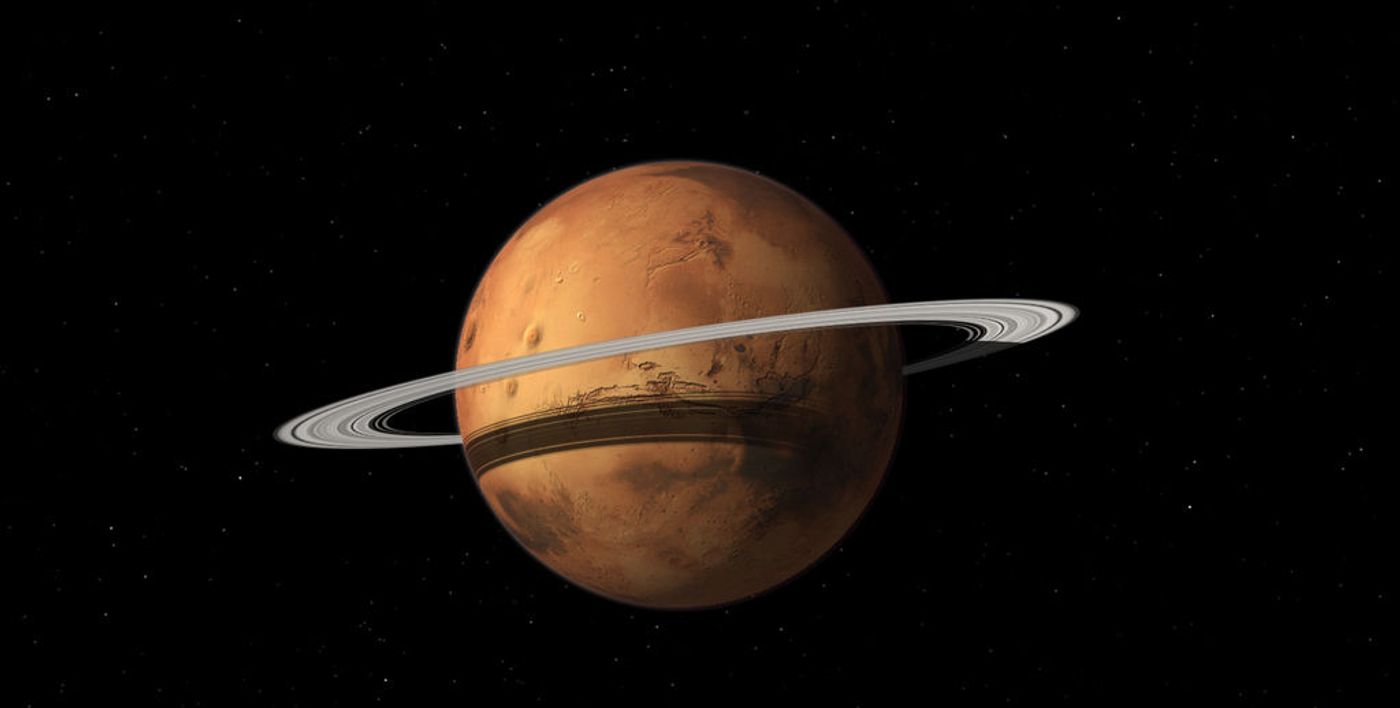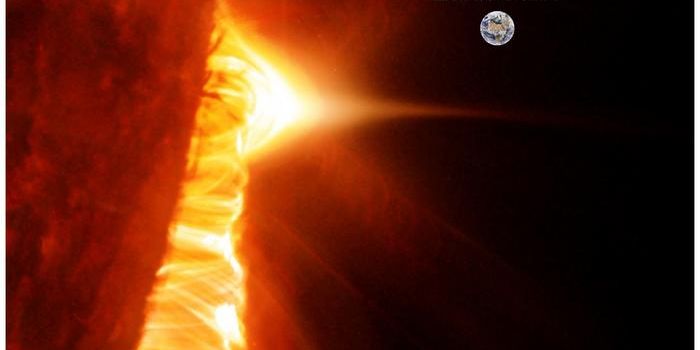Mars Could One Day Have Rings Like Jupiter
Planetary rings are found around various planets in our Solar System, but for the most part, it’s limited to gassy planets in the outer Solar System, such as Jupiter, Neptune, Saturn, and Uranus.
On the other hand, a new study published in the journal Icarus by a couple of researchers from the Physical Research Laboratory in Ahmedabad, India have suggested evidence for Mars, a terrestrial (rocky) planet, slowly developing its own rings.
Image Credit: Tushar Mittal/Celestia Development Team
So how can this be? It turns out that in addition to all the space rocks that are getting shredded up when wandering too close to the planet, Mars’ moon Phobos is slowly drifting closer and closer to Mars because of the gravitational tug being imposed on it. This activity is slowly tearing the moon apart, leaving behind a cloud of debris and dust that continues to orbit Mars.
Evidence for the cloud, which exists between 93-190 miles above the surface, was originally discovered when the Mars Atmosphere and Volatile Evolution (MAVEN) satellite arrived at the planet four years ago, but MAVEN really wasn’t designed to analyze the dust in detail, so it isn’t a very good tool for examining the dust cloud to learn more about its contents and origin.
On the other hand, the India-based researchers believe at least 0.6% of the dust cloud around Mars came from the red planet’s moons because of the way they are drifting towards the red planet very slowly. They also estimate that perhaps between 20-70 million years from now, the continued degradation of the moon will eventually shatter it into pieces, adding to the rings.
Not all researchers are onboard with the theory that Mars has (or will develop) rings; in fact, many suggest that because MAVEN isn’t designed for observing rings that perhaps these estimates and findings are all wrong. One such critic is Laila Anderssen from the University of Colorado Boulder:
“To really say anything definitive about the dust, you really need to have a dedicated dust detector,” Anderssen says. “We still haven’t seen a good indication that there is significant material in the vicinity of the moons. So I think it’s a long shot, but one should never say never.”
Since a dedicated dust-observing probe has never actually made it to Mars successfully, there is definitely a lot of curiosity surrounding these dust clouds that are circling the red planet. There isn’t a whole lot of evidence that they’re coming from the planet’s moons, but even so, there isn’t very much information about where the dust came from otherwise either.
Without a doubt, there is an interesting mystery here that needs to be solved, so perhaps a future mission to observe the dust up close and in higher detail and then to compare that data to the red planet’s moon composition could reveal the answers we’re looking for.
Source: New Scientist









